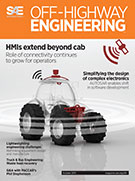Book

Cybersecurity for Commercial Vehicles
2018-08-28
It delivers details on key subject areas including: • SAE International Standard J3061; the cybersecurity guidebook for cyber-physical vehicle systems • The differences between automotive and commercial vehicle cybersecurity. • Forensics for identifying breaches in cybersecurity. • Platooning and fleet implications. • Impacts and importance of secure systems for today and for the future. ...This book provides a thorough view of cybersecurity to encourage those in the commercial vehicle industry to be fully aware and concerned that their fleet and cargo could be at risk to a cyber-attack. ...It delivers details on key subject areas including: • SAE International Standard J3061; the cybersecurity guidebook for cyber-physical vehicle systems • The differences between automotive and commercial vehicle cybersecurity. • Forensics for identifying breaches in cybersecurity. • Platooning and fleet implications. • Impacts and importance of secure systems for today and for the future.







